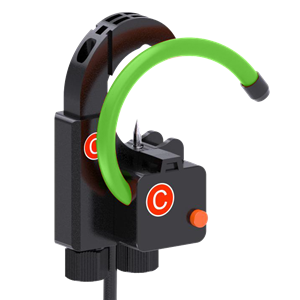Company News
-
1004-2024
Latching Relays: Efficient and Reliable Switching Solutions
A latching relay, also known as a "stay relay" or "bistable relay," is an electrically operated switch that maintains its position without the need for continuous power. This unique feature makes latching relays highly efficient and reliable, particularly in applications where energy efficiency and long-term stability are crucial.
-
0104-2024
Design Considerations for Power Frequency Transformers
Power frequency transformers are integral components in electrical systems, playing a pivotal role in converting and transmitting electrical energy efficiently. The design of these transformers involves meticulous planning and attention to detail to ensure optimal performance and reliability. This article explores some crucial design considerations for power frequency transformers.
-
2411-2023
OSWELL will attend the Enlit Europe in Paris, France
The 24th European Power Energy Exhibition 2023 will be held in Paris, France, from November 28 to November 30, covering power, water, heat, gas and other energy fields, involving smart meters, smart grid, data management, smart home, AMR&AMI, communication &IT, energy retail and other topics. To become the world's leading comprehensive exhibition covering the whole energy industry chain, from primary energy to power generation, from grid operation to end consumers, from a variety of energy consumption structure to energy efficiency and energy conservation and environmental protection.
-
3012-2023
Testing and Measurement of Toroidal Inductor Performance
Toroidal inductors play a crucial role in many electronic applications, and it is essential to ensure their performance meets the required specifications. This article aims to provide a comprehensive understanding of the testing and measurement techniques used to evaluate the performance of toroidal inductors.
-
1912-2023
The use of stepper counter
A stepper counter, also known as a step counter or a digital counter, is a device that counts, measures, or records the number of occurrences of certain discrete events. It operates by registering an incremental increase upon receipt of each digital input pulse, hence the name 'step' counter.
-
0112-2023
Thermal Effects and Temperature Drift of Current Shunt Resistors
In the field of electrical engineering, Current Shunt Resistors are widely used for accurate current measurements. However, it is important to consider the thermal effects and temperature drift characteristics of these resistors to ensure their reliable performance. This article aims to explore the impact of thermal effects and temperature drift on Current Shunt Resistors and discuss strategies to mitigate their influence.
-
3011-2023
Accuracy and Precision Evaluation of Current Shunt Resistor
Accurately measuring current is crucial in circuit design. To achieve accurate current measurement, engineers often use a Current Shunt Resistor as a current sensing element. This article will delve into the importance of evaluating the accuracy and precision of Current Shunt Resistors, as well as discuss some commonly used evaluation methods.
-
2911-2023
Advancements in Miniature Voltage Transformers
Miniature voltage transformers, also known as mini VTs or compact VTs, have gained significant attention in recent years due to their compact size and versatile applications. These transformers play a crucial role in measuring and monitoring voltage levels in various electrical systems. This article explores the advancements in miniature voltage transformers and their impact on different industries.
-
0611-2023
Applications of Cage Terminals
Cage terminals, also known as spring clamp terminals, are widely used in the electrical industry to connect wires and cables to a variety of equipment and devices. These terminals consist of a metallic cage that clamps down on the wire when tightened, providing a secure and reliable connection. In this blog post, we will explore some common applications of cage terminals in different industries.
-
0411-2023
Troubleshooting and Maintenance of Voltage Transformers
Voltage transformers (VTs) are critical components in power systems, and their proper operation is essential for accurate voltage measurement and control. However, like any other electrical equipment, VTs can fail due to various reasons, leading to reduced system performance and safety hazards. In this blog post, we will discuss common causes of VT failures and ways to troubleshoot and maintain them.




